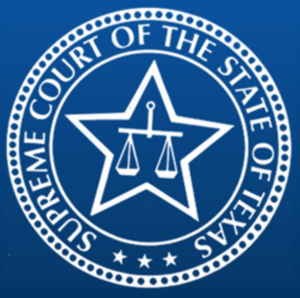 The Supreme Court of Texas recently issued an opinion in a premises liability case involving teenage church volunteers who suffered injuries in a fire. The church hosted an annual festival featuring rides, games, music, and vendors—the church profits from the festival from receiving a portion of the sales from vendors and sales. The 4-H Leaders Association (4-H) rented a booth at the festival to sell various food items. 4-H paid the church to rent the booth, but the church did not receive any profits from the booth’s sales. According to the record, a fire broke out in the booth, and five volunteers, four of whom were teenagers, suffered injuries in the fire.
The Supreme Court of Texas recently issued an opinion in a premises liability case involving teenage church volunteers who suffered injuries in a fire. The church hosted an annual festival featuring rides, games, music, and vendors—the church profits from the festival from receiving a portion of the sales from vendors and sales. The 4-H Leaders Association (4-H) rented a booth at the festival to sell various food items. 4-H paid the church to rent the booth, but the church did not receive any profits from the booth’s sales. According to the record, a fire broke out in the booth, and five volunteers, four of whom were teenagers, suffered injuries in the fire.
The trial primarily hinged on the cause of the fire, the plaintiffs arguing that it stemmed from a defective propane tank, while 4-H and the church argued that it was from one of the volunteers spilling ice into a fryer. The trial court found in favor of the defendants, and the appellate court affirmed in part and reversed in part. The appellate court found that the plaintiffs did not have a claim against 4-H but remanded the case against the church for a new trial.
Under Texas law, a property owner or occupier’s duty to someone on their property depends on the person’s status. Typically, property owners owe invitees a duty to “exercise reasonable care to protect against unreasonable risk of harm,” that the owner knew or should have known through reasonable diligence. Texas property owners owe licensees a lesser duty to use ordinary care to warn of or make a dangerous condition, that the owner knows of, safe.
 Texas Injury Lawyers Blog
Texas Injury Lawyers Blog








 The Supreme Court of Texas recently issued a
The Supreme Court of Texas recently issued a  A family initiated a Texas wrongful death lawsuit against SpaceX following a car accident outside its launch site. According to a recent news
A family initiated a Texas wrongful death lawsuit against SpaceX following a car accident outside its launch site. According to a recent news  The Supreme Court of Texas issued a
The Supreme Court of Texas issued a  May 9, 2021: KILGORE, Texas (KETK) – An East Texas toddler who was fighting for his life
May 9, 2021: KILGORE, Texas (KETK) – An East Texas toddler who was fighting for his life  Self-driving, or autonomous cars, are revolutionizing the way the public looks at travel and car ownership. These vehicles turn active drivers into passive passengers, allowing motorists to rely on the car’s advanced computerized system to navigate the roads and avoid collisions. However, these cars may result in a serious Texas car accident, as the new technology is still being refined.
Self-driving, or autonomous cars, are revolutionizing the way the public looks at travel and car ownership. These vehicles turn active drivers into passive passengers, allowing motorists to rely on the car’s advanced computerized system to navigate the roads and avoid collisions. However, these cars may result in a serious Texas car accident, as the new technology is still being refined. Vaccines are one of the most effective ways to prevent the spread of infectious diseases throughout the world. The overwhelming majority of people who receive vaccines do not experience serious problems, and the benefits greatly outweigh the threat of risk. However, similar to the risks associated with natural supplements and other pharmaceuticals, some vaccine recipients may suffer adverse reactions. Depending on the nature and circumstance of the injury, victims may file a Texas medical malpractice or pharmaceutical error lawsuit. Further, the National Vaccine Injury Compensation Program (VICP) provides compensation to individuals who have suffered injuries from certain vaccines.
Vaccines are one of the most effective ways to prevent the spread of infectious diseases throughout the world. The overwhelming majority of people who receive vaccines do not experience serious problems, and the benefits greatly outweigh the threat of risk. However, similar to the risks associated with natural supplements and other pharmaceuticals, some vaccine recipients may suffer adverse reactions. Depending on the nature and circumstance of the injury, victims may file a Texas medical malpractice or pharmaceutical error lawsuit. Further, the National Vaccine Injury Compensation Program (VICP) provides compensation to individuals who have suffered injuries from certain vaccines. April 2021: Playa del Carmen, Q.R. Mexico— A criminal investigation into the death of a 13-year-old boy at an Xcaret water park has been opened. In a press release, the Attorney General of the Mexican state made the announcement after it was notified of the death of the child via a private hospital.
April 2021: Playa del Carmen, Q.R. Mexico— A criminal investigation into the death of a 13-year-old boy at an Xcaret water park has been opened. In a press release, the Attorney General of the Mexican state made the announcement after it was notified of the death of the child via a private hospital.